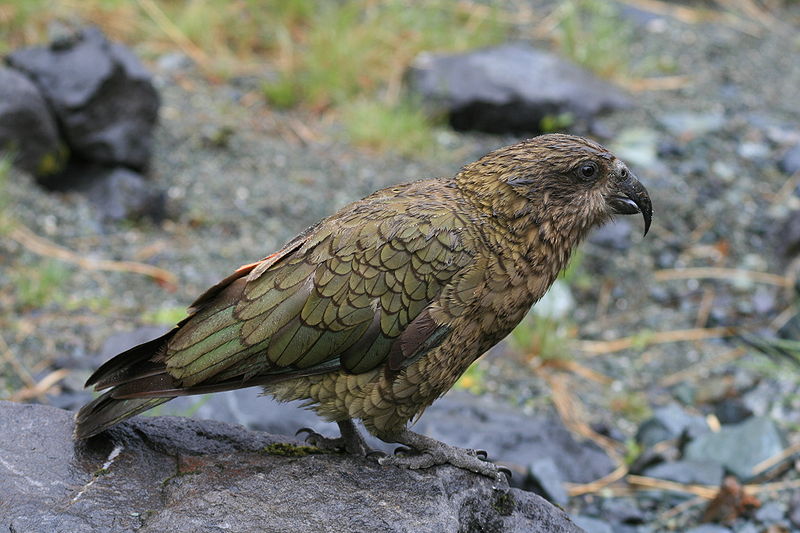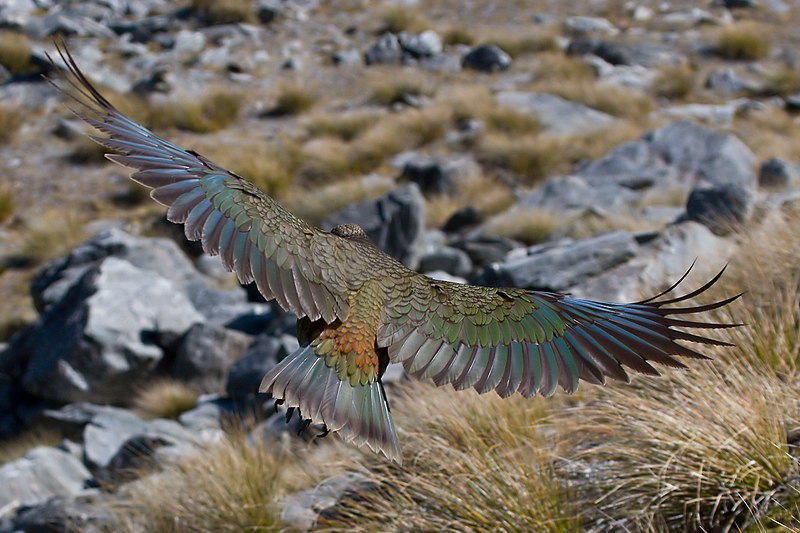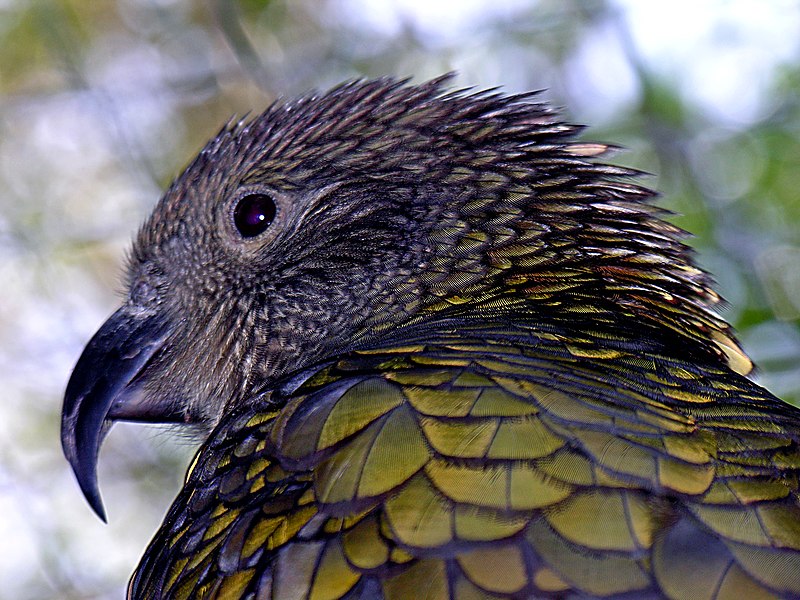 Parrots are known to be very intelligent, but a recent study of Kea Parrot (Nestor notabilis) learning abilities surprised even well-experienced ornithologists. The study differed from most in that it required the birds not only to learn new tasks but to build upon that knowledge and to discard learned behaviors once they were no longer useful. As you’ll see, the Keas definitely lived up to their Latin species name – notabilis – with quite “notable” results!
Parrots are known to be very intelligent, but a recent study of Kea Parrot (Nestor notabilis) learning abilities surprised even well-experienced ornithologists. The study differed from most in that it required the birds not only to learn new tasks but to build upon that knowledge and to discard learned behaviors once they were no longer useful. As you’ll see, the Keas definitely lived up to their Latin species name – notabilis – with quite “notable” results!
World’s Oddest Parrot?
The Kea is a quite unusual parrot found only on New Zealand’s South Island. The world’s only truly alpine parrot, it frolics in snow, nests on and below the ground and has been known to consume carrion and even to possibly prey upon lambs (unusual enough!?). Its continued existence is in jeopardy due to introduced predators such as stoats and possums, but the government has recently removed it from the list of threatened species (an action contested by some conservation groups).
Learning and Building Upon New Skills
 The two species of New Zealand Kakas are placed in the same genus as the Kea; a third is now extinct.
The two species of New Zealand Kakas are placed in the same genus as the Kea; a third is now extinct.
Researchers at the Universities of Vienna and Oxford tested the Kea’s problem-solving abilities by presenting birds with a box containing food. There were 4 ways by which the Keas could reach the food – by pulling a switch, using a hooked lever to open a window, putting marbles on a runway to knock the food out and inserting a stick to poke the food within reach. This video of the entire experiment is amazing – please don’t miss it!
One Kea mastered all 4 skills; other individuals also made good progress. The bird’s abilities were particularly impressive because Keas do not normally use tools in the wild, but needed to learn to do so in order to retrieve the food in this test. New Caledonian Crows did well also, but they are known tool-users under natural conditions (please see article below).
Once one solution was mastered, researchers blocked it so that the action no longer worked. Amazingly, the “brightest” Kea, nicknamed “Kermit”, discarded useless techniques and quickly developed new ways into the food box.
The Kea’s curved bills prevented easy use of a stick, but when a stick was needed to reach the food they found a way…as you’ll see from the video, “Kermit” made 5 position adjustments, using both feet and bill, in order to get his stick into just the right position.
Future Research: How Do We Acquire Knowledge?
The Keas’ abilities to build upon what they learned and to improvise in order to meet changing conditions went beyond showing merely “what” birds can learn and provided insights as to “how” they learn.
 Researchers believe that continued studies may shed light on the process of learning in people. They reasoned that the birds did not merely stumble upon the solutions by random trial and error, but rather analyzed the situation and chose the most likely path to success. Similarly, human language is too complicated a skill for a child to acquire by mere chance…a toddler’s (seemingly) meaningless blubbering must be directed somehow, but we do not yet know all that is involved. Studies of Keas and other highly intelligent birds may help…and they make for great videos!
Researchers believe that continued studies may shed light on the process of learning in people. They reasoned that the birds did not merely stumble upon the solutions by random trial and error, but rather analyzed the situation and chose the most likely path to success. Similarly, human language is too complicated a skill for a child to acquire by mere chance…a toddler’s (seemingly) meaningless blubbering must be directed somehow, but we do not yet know all that is involved. Studies of Keas and other highly intelligent birds may help…and they make for great videos!
Other parrots have also shown amazing abilities to learn new tasks, and to understand the implications of what they have learned. Please see the article below for more info.
Further Reading
Amazing Video of the Kea and Crow Test
Parrots Are Smarter Than We Thought (African Grey Parrots)
New Caledonian Crow Intelligence
Kea Conservation (Nest Hollow Videos)
Adult Kea image referenced from wikipedia and originally posted by Mark Whatmough
Adult Kea Flying image referenced from wikipedia and originally posted by Chmehl
Kea Bill image referenced from wikipedia and originally posted by PhillipC
 That Bird Blog – Bird Care and History for Pet Birds
That Bird Blog – Bird Care and History for Pet Birds




OMG!!!!!!! THIS VIDEO IS AWESOME FRANK!!! I cannot believe the problem solving with these birds! When one method of obtaining a reward ceases to exist these so called “Bird Brains” actually are processing cause & effect…this is incredible. I have always been very sensitive to an animal’s behavior even the smallest creature because they have such complex modes of communication~some people are blind to the subtle jestures that may appear like nothing but in actuality the jestures or sounds are key to their communication & sirvival. The “Tool” Freddie uses each night once I turn the lights off. .is actually WHINING to get me to pet him…I hope its not because he is really afraid of the dark! LOL. Have you honestly ever heard of a conure that has it’s owner figured out~YES THEY ARE LITTLE OPPORTUNISTIC PATHOGENS! lol HELP
Hello Leila,
Thanks for the input. Yes, they are definitely skilled at accessing what works and what does not, when it comes to interacting with familiar people. You may also enjoy http://blogs.thatpetplace.com/thatbirdblog/2009/01/23/japan%E2%80%99s-amazingly-intelligent-carrion-crows-corvus-carone-bird-behavior-notes/#.VLWs-3tkD6o best, Frank